Why in Iceland your neighbour is likely to be the best emergency responder
The structure of disaster relief in Iceland is unique. Volunteers sacrifice time (and money) to be there when fellow citizens or tourists are in trouble. But why?
From the whiteout on Eyjafjallajökull, contours gradually emerge as the snow car scrambles down the bumpy terrain. "Damn, visibility is improving," curses Hildur, who is driving. It's a statement you only hear when a team from the Icelandic Association for Search and Rescue (ICE-SAR) is training for emergencies.
There's no better practice for rescue operations on unpredictable terrain than navigating down a glacier with only GPS. The All-terrain vehicle (ATV), originally built in Sweden in the 1980s to defend the borders against Russia, is only used in the mountains, when weather conditions make helicopter rescue impossible.
Lured by adventure, kept by the community spirit
Hildur and Steinar are two of more than 6,000 volunteers (including accident prevention units and youth units) in Iceland who are ready to help their fellow citizens in emergencies on land, water, and in the air. The umbrella organisation Slysavarnafélagið Landsbjörg consists of 99 partly specialised rescue teams, including divers, parachutists, mountain rescuers. They are highly trained specialists for tasks that in other countries fall under the military's jurisdiction. Iceland has no army, Iceland has students, mothers, or CEOs who search for missing people, rescue tourists from glacier crevasses, and sometimes recover bodies. Or even help on international earthquake missions, the latest in Syria and Turkey earlier in 2023.
- Where does this helpfulness come from?
"I wanted to try something new," says Hildur, who completed the mandatory two-year training in 2019 and has been a part of the Air Ground Rescue Team Reykjavík (FBSR) ever since. "A friend of mine took me along," says Steinar, who has been involved for 20 years, campaigned for the procurement of the ATV, and has been maintaining and caring for it every Tuesday evening since.
Sometimes the FBSR organises fun trips to practise the handling of cars and other equipment and keep the team spirit alive.
Florian, who moved from Germany to Iceland seven years ago, wants "to give something back to society." Einar was lured by adventure six years ago when he, as a 24-year-old, joined the team together with his brother. “And I like the idea that ordinary people help other people. It's a nice sense of community thinking in these individualised times we live in”, he says. Now, he is training the next generation of rescuers alongside his Ph.D. studies in marine biology.
Volunteers go on up to 1800 missions per year
Membership in a rescue team is firmly anchored in Icelandic society. About 1.7 percent of the population is a volunteer. In any given year there are about 1200-1800 missions involving on average 2,5 teams with an average of 4-6 volunteers participating.
Although rule number one is to never put themselves in danger, it sometimes happens that some of them must take high risks themselves when rescuing tourists who embark on reckless tours without taking weather forecasts too seriously. Other members dedicate themselves to organisation, work on vehicles, or bring in IT skills. And everyone values the community.
“For me, this is not work, it’s a fun trip with friends”, says Einar. Indeed, this trip to Eyjafjallajökull is set up as a skiing trip. With super jeeps, on foot, with snowmobiles, and the snow car, they head to the edge of glacier. Fourteen men and women start at half-past six in the morning. Most of them are there mainly to take the opportunity to ski. But since some cars are quite new, the outing automatically becomes a practice session on operation.
“With the fun factor, you activate people, and the more they operate the vehicles, the better they know the procedures in case of an emergency," says Gunnar Atli, who organised the tour.
Hikers tend to get lost and need help on the popular routes here. It's advantageous when the Reykjavik mountain rescuers know the terrain. And their vehicles, one of which breaks down on the way back, turning the trip into something more serious. "It's nice that it happened today and not during an operation", notes Florian.
Increase in accidents during mid-winter country crossings
Activity-based accidents, such as hiking or skiing, among others, are the second-largest category where people need to be rescued from the wilderness, according to nationwide statistics shared with Iceland Monitor upon request by Slysavarnafélagið Landsbjörg. On average there were 46 searches annually for missing persons for the last 10 years, the largest portion of searches being for despondent people. The single largest category for most rural teams is roadside assistance caused by poor road conditions during winter storms.
Overall, the quadrupling of tourists coming to Iceland in the last ten years has not resulted in the same increase in rescue team callouts, Arnarson states. However, ICE-SAR has seen an increase in mid-winter expedition-type country crossings that have resulted in difficult rescues. "These instances are, in the grand scheme, very rare but can be very challenging", says Guðbrandur Örn Arnarson, Project Manager at ICE-SAR. This year, rescue teams were also in constant use during the avalanches in the in the East Fjords .
Many of the teams spread all over the country originated from accidents or natural disasters that revealed gaps in Iceland's rescue network. The FBSR, for example, was founded in 1950 after the crash of the Geysir airplane on Vatnajökull, when the survivors waited several days for rescue. Many Icelanders have ancestors who have painfully experienced what life in extreme weather conditions and surrounded by volcanoes, ice, and the sea can mean.
This could also be the reason for the remarkable helpfulness, Magnús Viðar Sigurðsson suspects. He’s the president of FBSR, which nowadays is one of the biggest and best equipped Rescue Teams in Iceland. “The willingness to help others and sometimes even put yourself in danger for that is in our history”, he says. “I believe, this can’t be matched anywhere else in the world.”
His main job is in film industry, in his spare time he is an enthusiastic mountaineer. Looking for company for more advanced adventures he joined the FBSR. His team currently has 300 members, 40-70 of whom actively take part in missions.
Biggest challenge: Lack of time
The mandatory two-year training is popular, even though the participants are expected to sacrifice every second weekend for training during this period. Up to 30 beginners start every year, knowing that they need to buy their personal equipment for the challenging missions themselves.
However, fluctuation in the team is high. “Usually only five to ten people stay in the squad after completing the training”, states Magnús. “And of those who stay, many disappear after two to four years.”
The main reason for dropping out is a lack of time. "Being in a rescue team can be demanding for families," Magnús says. "So, we try to find ways to involve partners and kids in some free time activities as well."
And to keep a high degree of voluntarism. Members of the Rescue Teams are informed via an app in case their expertise might be needed. Those who have time to help come. Those who don't stay at home, at work, or with their sleeping children. Some choose to help from the comfort of their sofa by analysing drone images that cannot be processed as quickly on site in real-time. There are no obligations once the training has been successfully completed.
In the whiteout on top of Eyjafjallajökull every step has to be well planned to make sure everyone is safe.
The reward for helpfulness is comprehensive training. "You learn a crazy amount of skills you can also use in your everyday life," says Einar, who specializes in water rescue but on this day, together with his friends from the Rescue Team, conquers the whiteout on Eyjafjallajökull on skis.
Another reward is the prestige that comes with the membership in the ICE-SAR. “When wearing the uniform, you can tell by the people’s reaction that they have huge respect for the work we do”, Magnús says. Nevertheless, the key motivation remains the same for him: “It´s just a great feeling to be able to help somebody.”
The volunteers are used to helping themselves, for example, if one of the cars or the ATV breaks down.


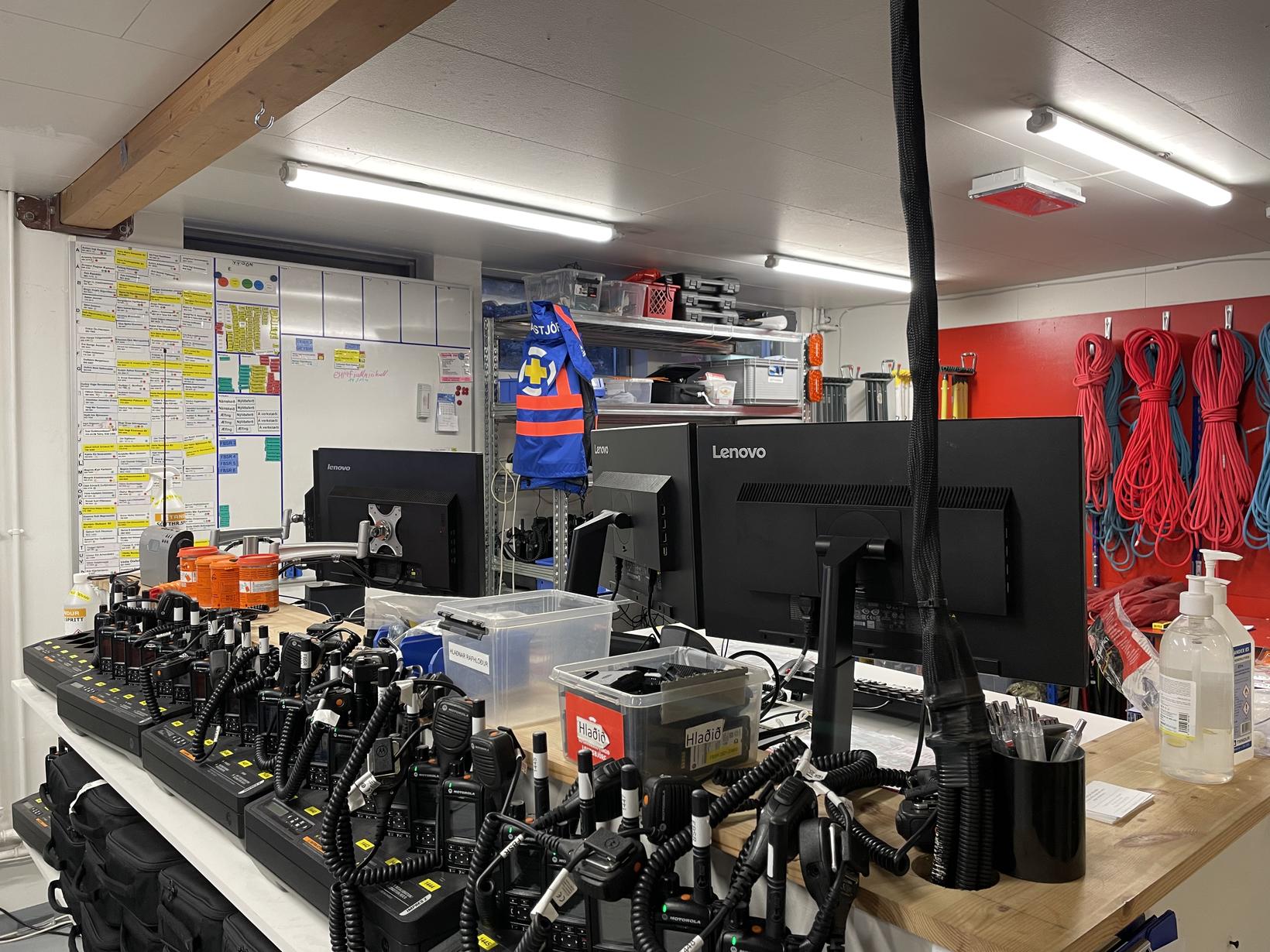


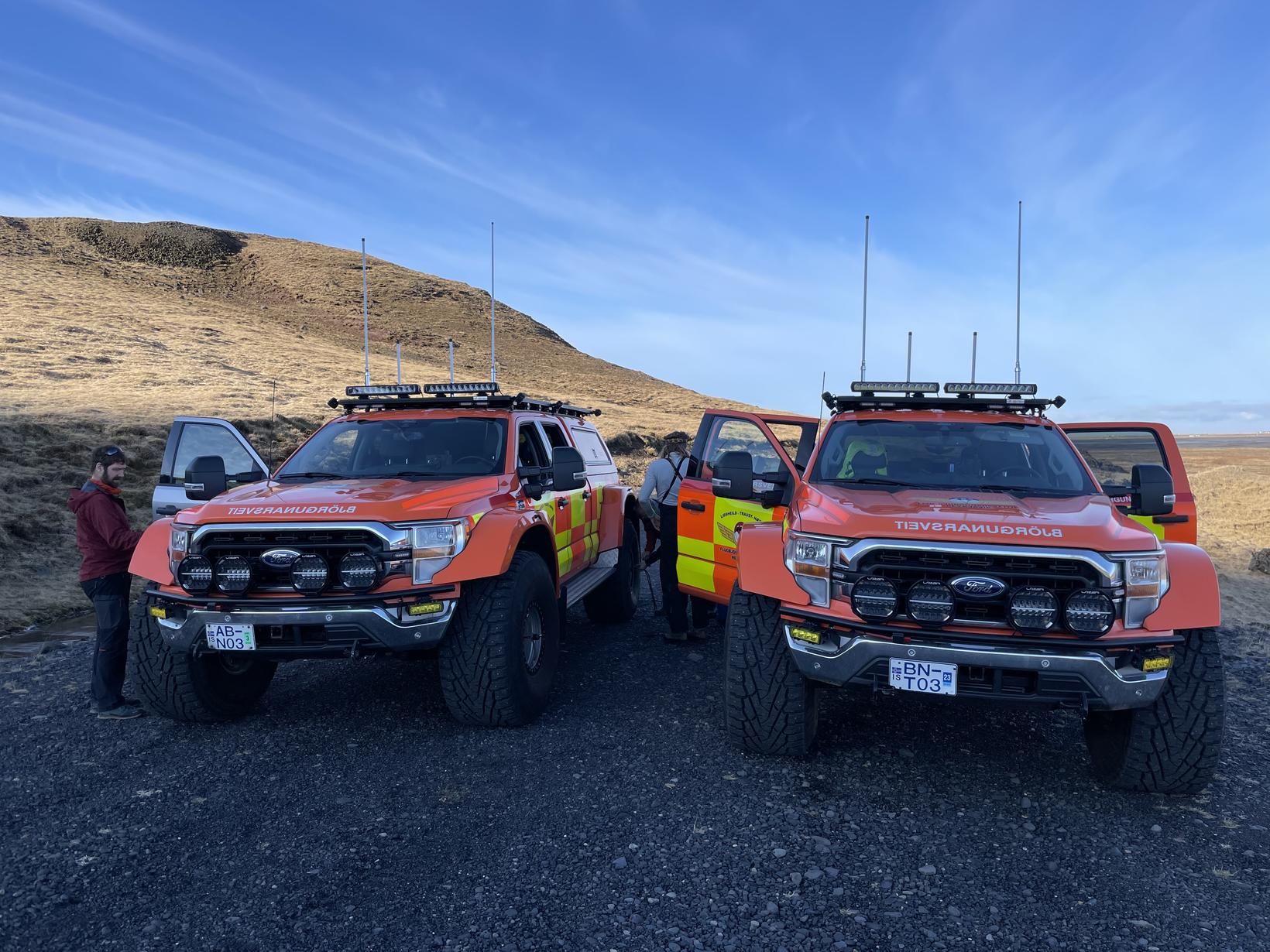
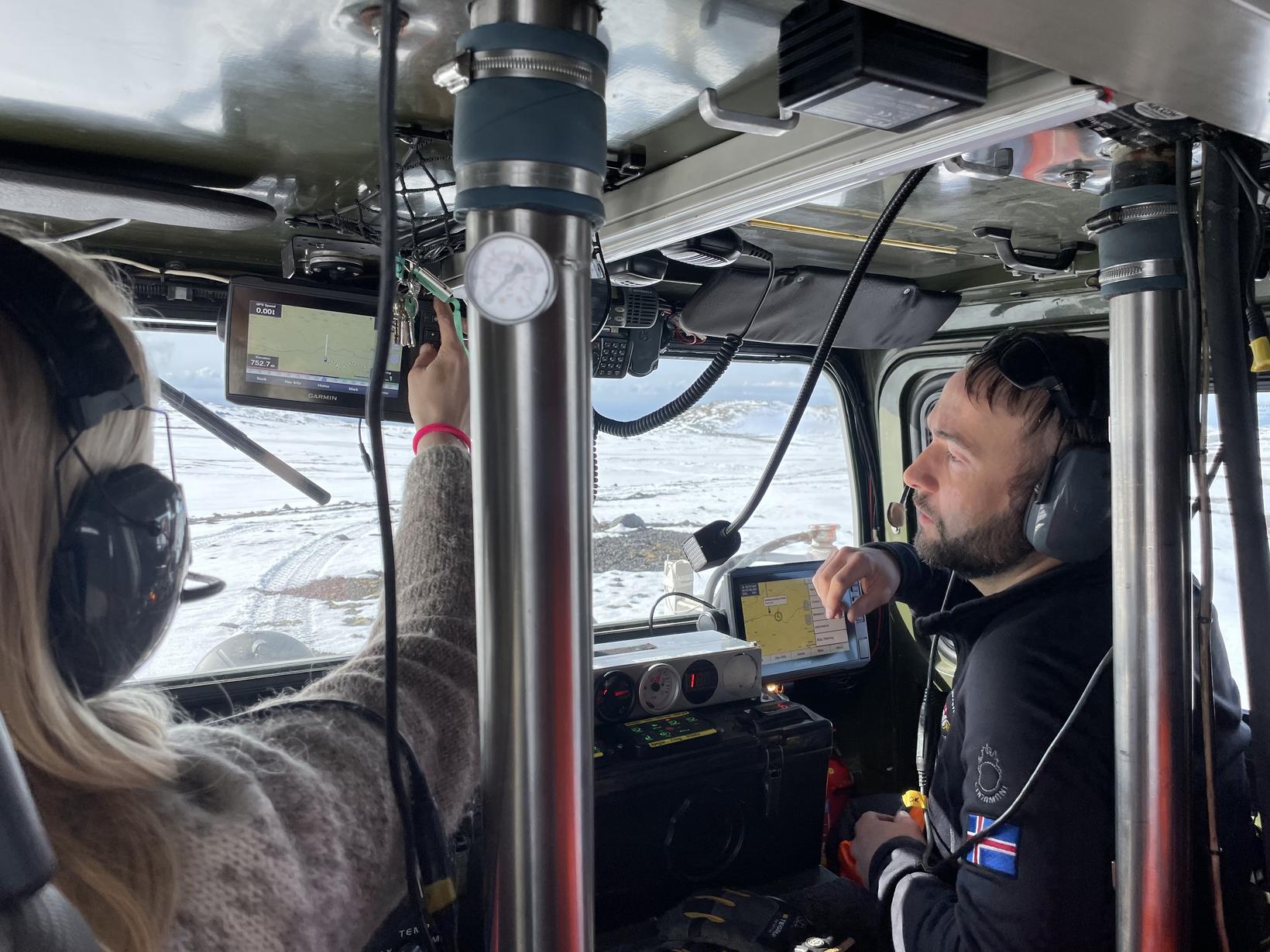
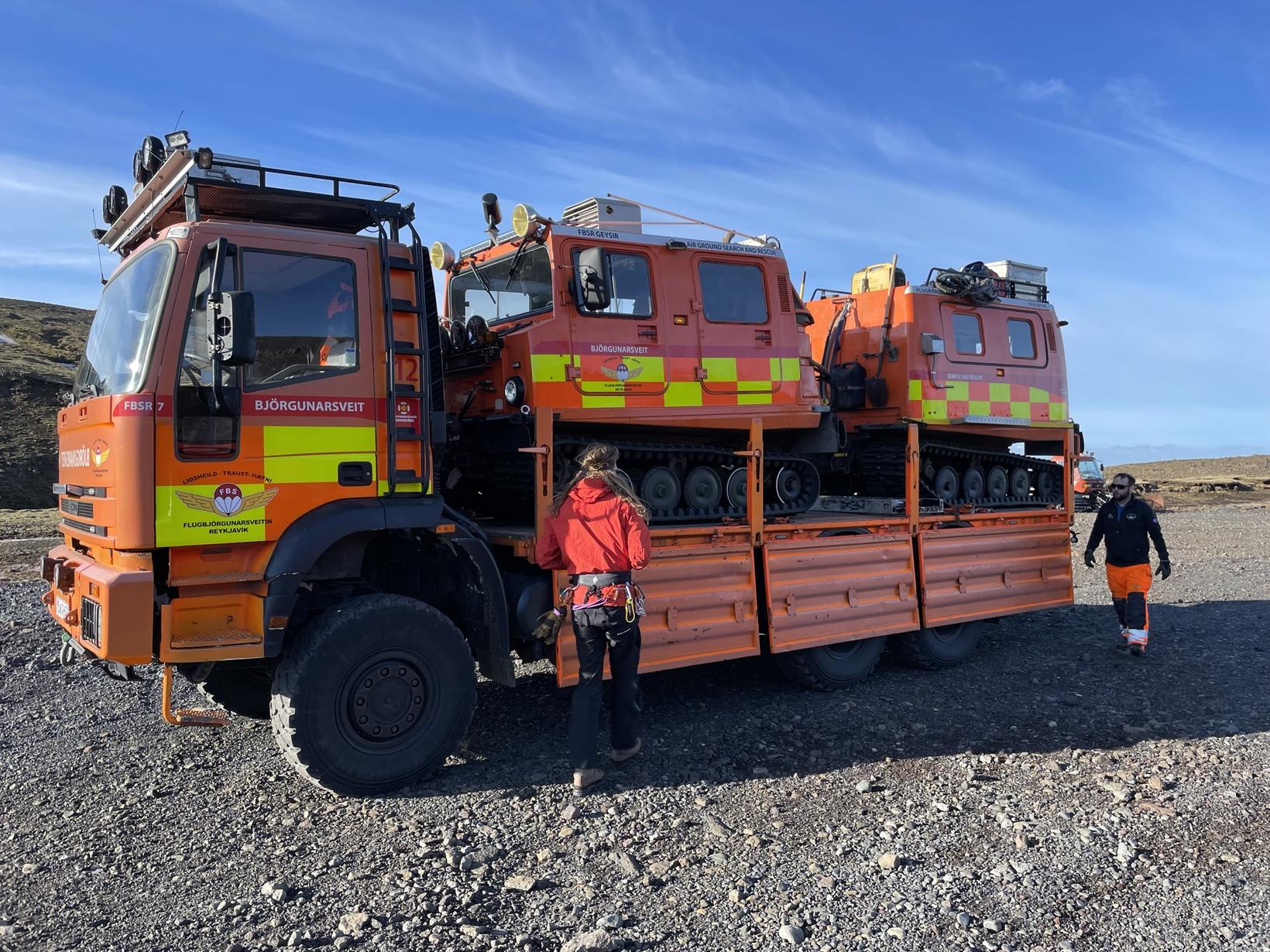
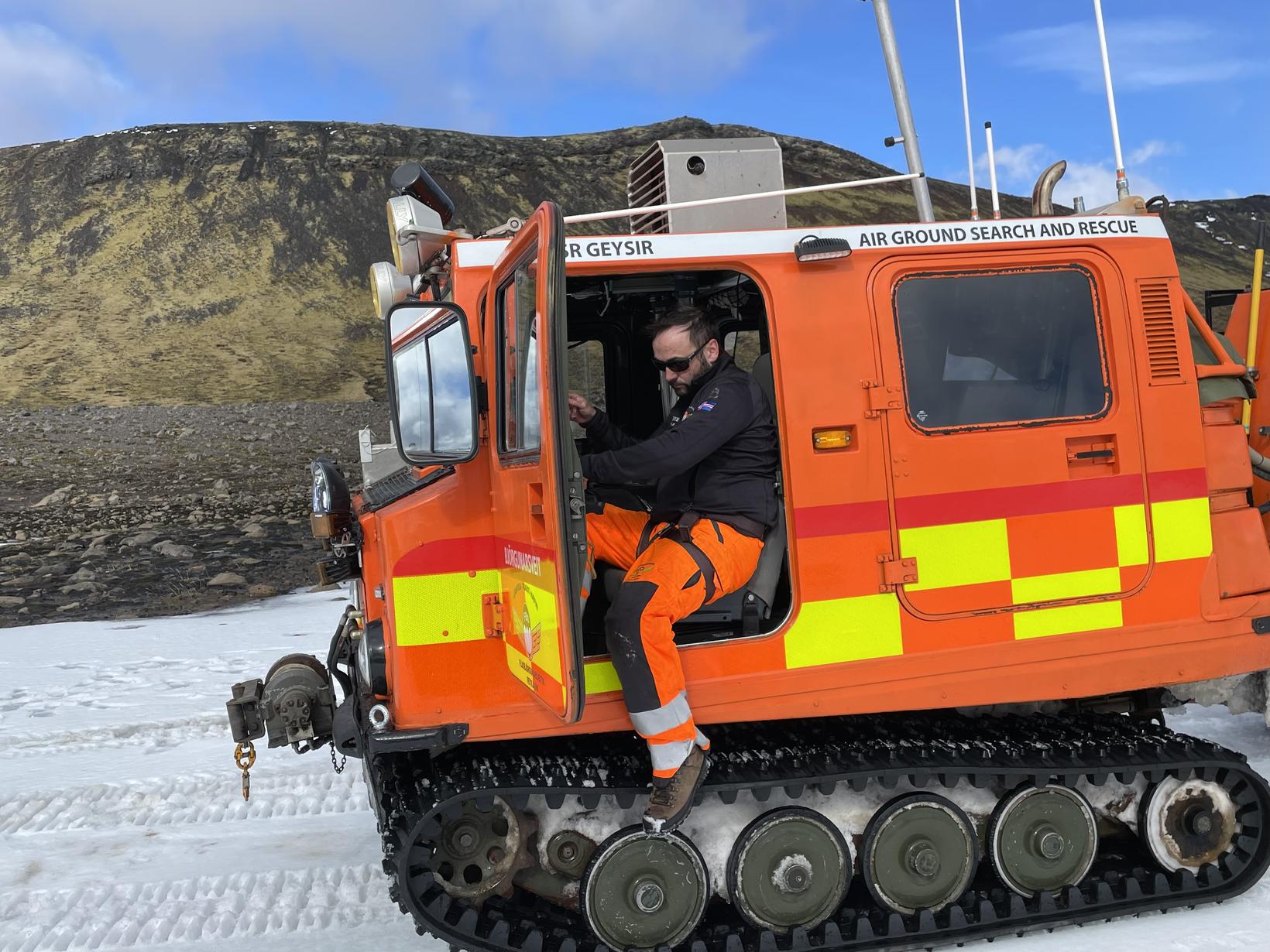
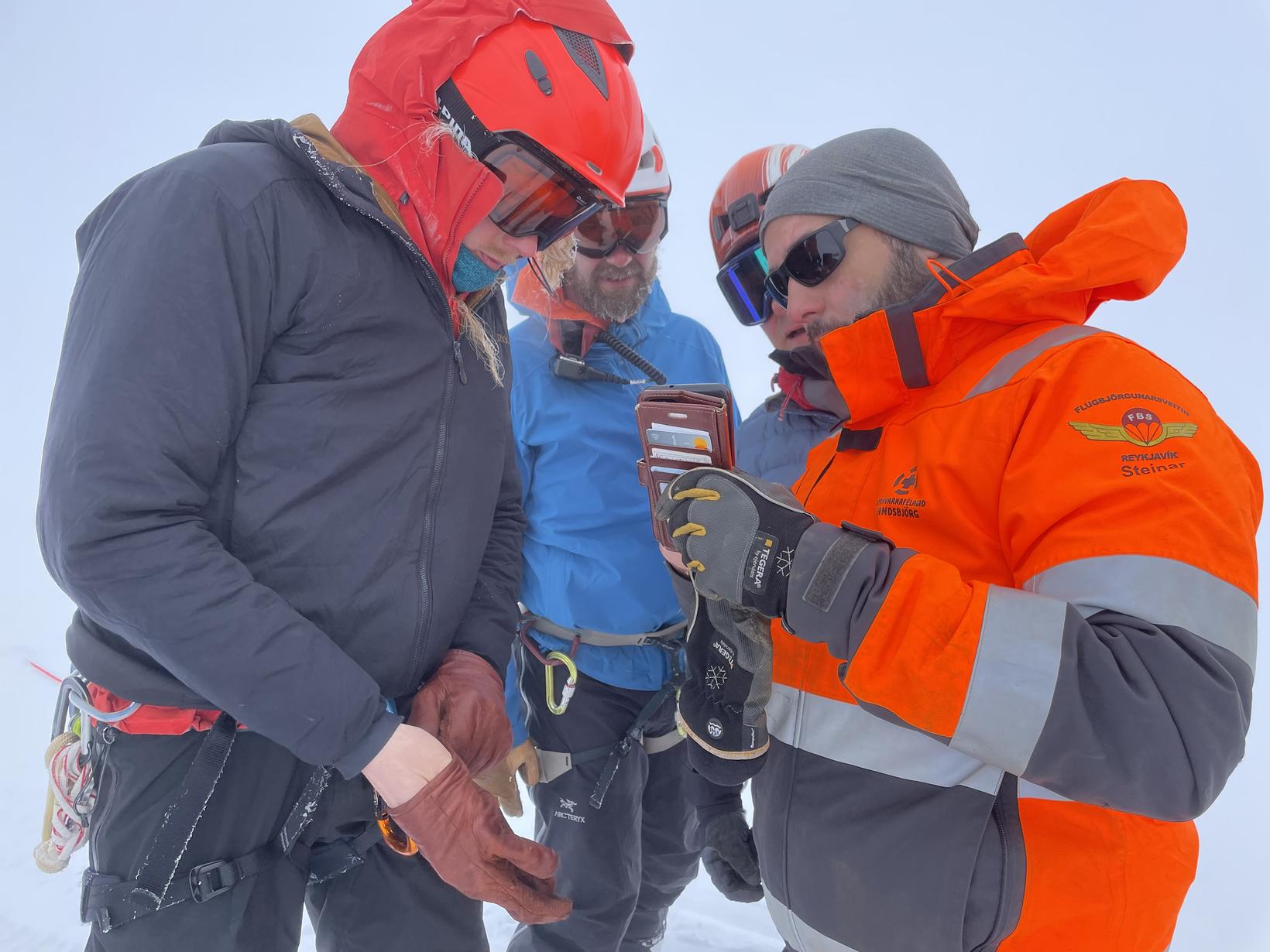
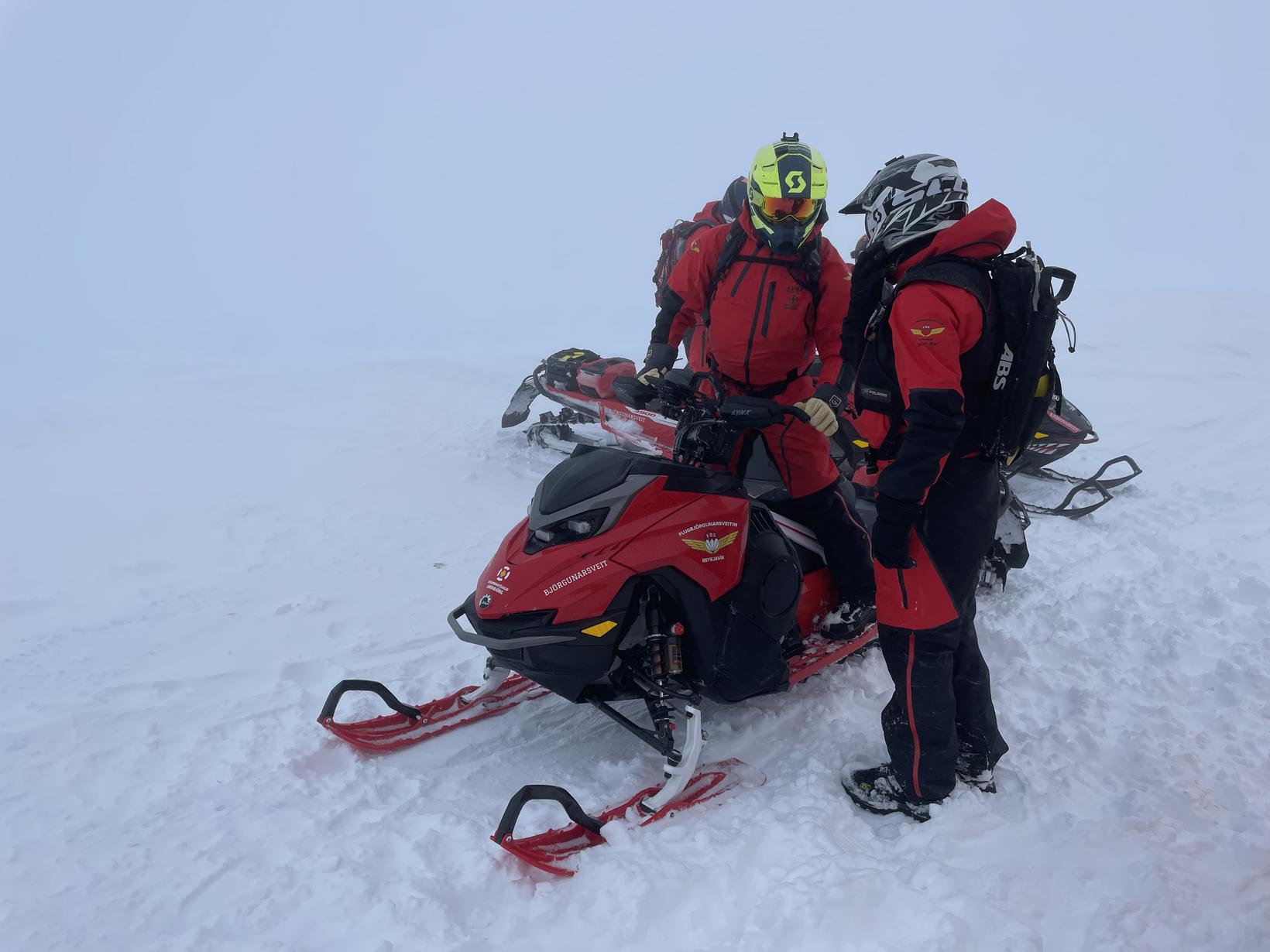
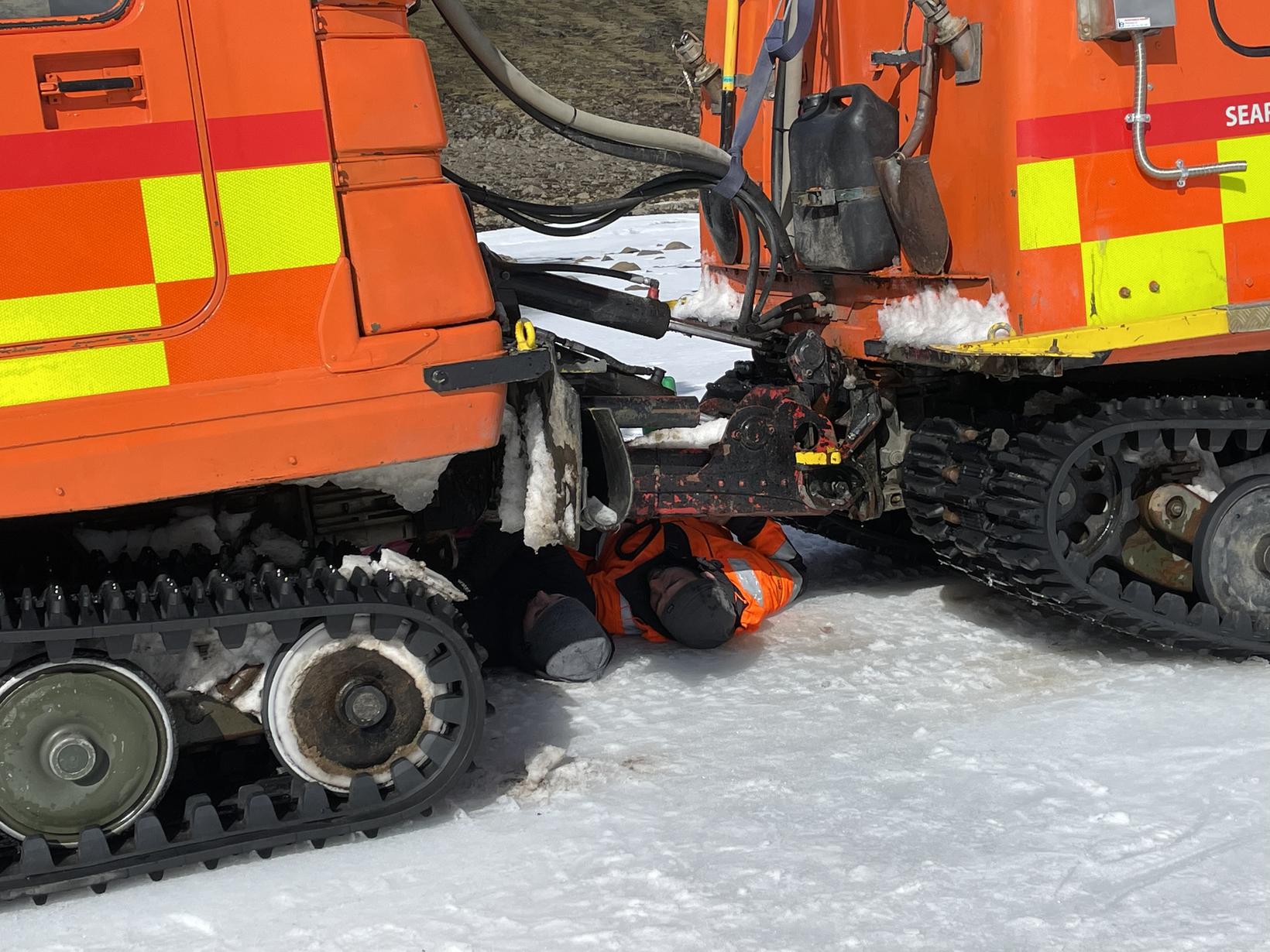
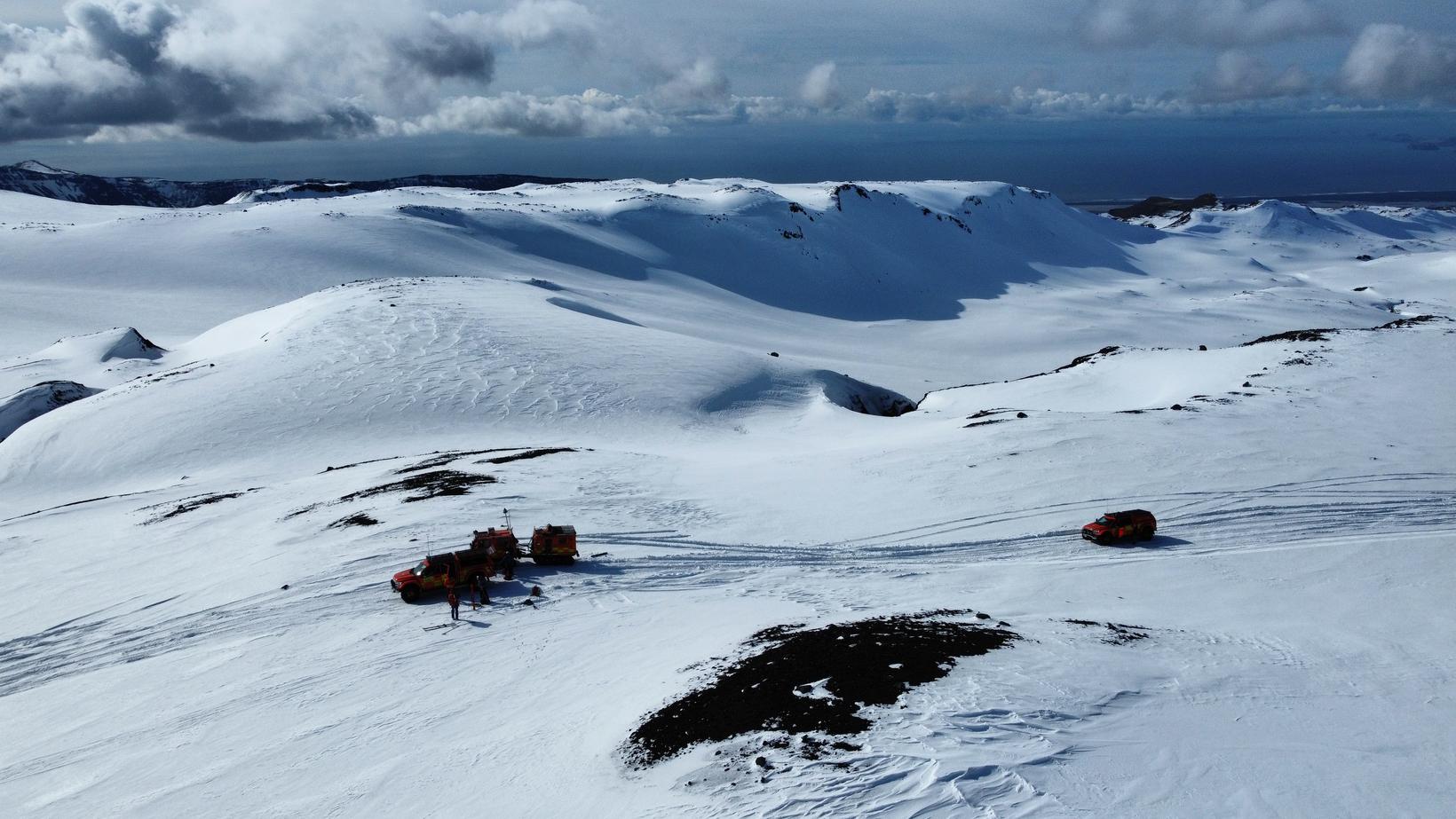


/frimg/1/53/30/1533092.jpg)




